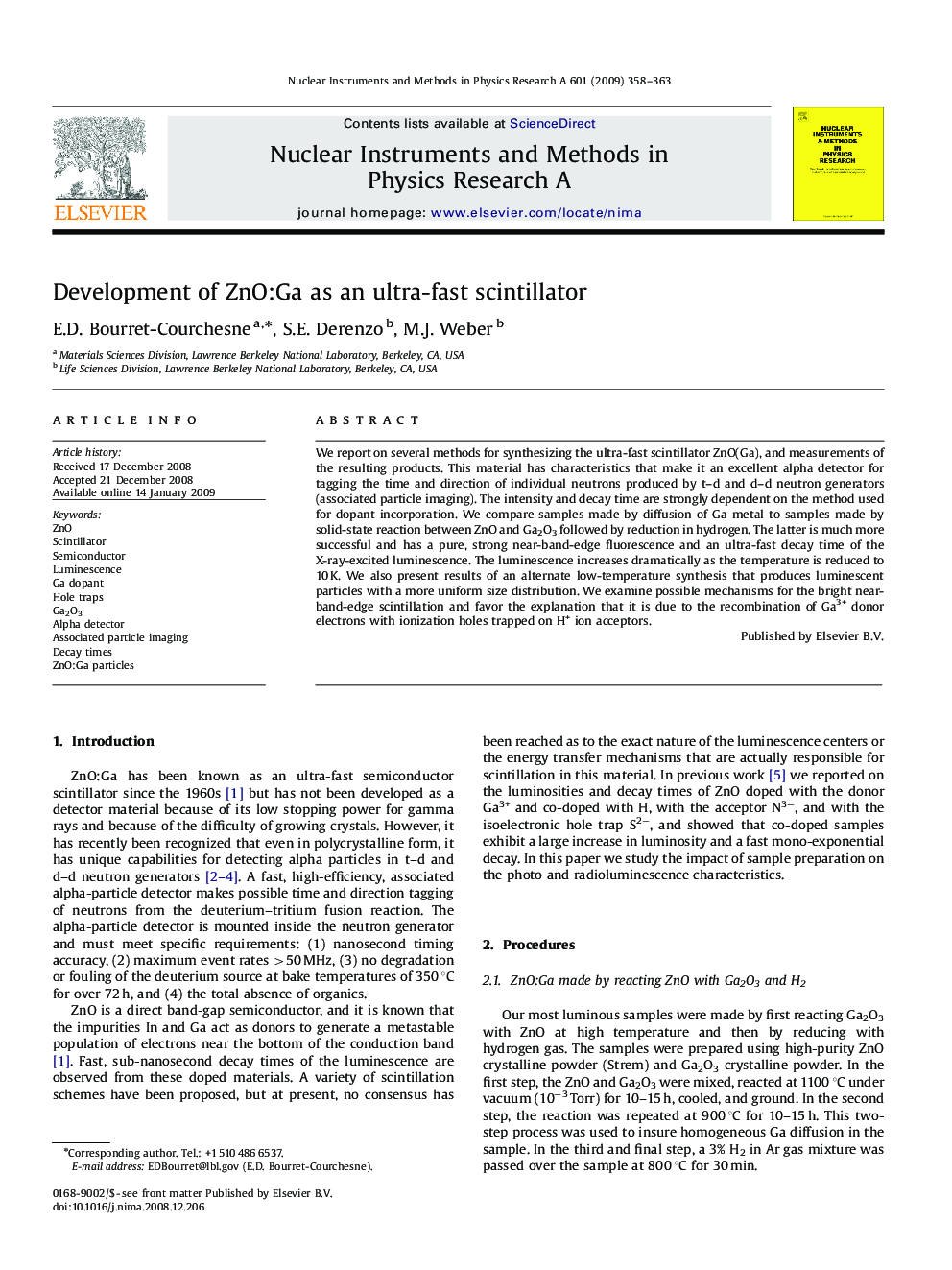| Article ID | Journal | Published Year | Pages | File Type |
|---|---|---|---|---|
| 1827945 | Nuclear Instruments and Methods in Physics Research Section A: Accelerators, Spectrometers, Detectors and Associated Equipment | 2009 | 6 Pages |
We report on several methods for synthesizing the ultra-fast scintillator ZnO(Ga), and measurements of the resulting products. This material has characteristics that make it an excellent alpha detector for tagging the time and direction of individual neutrons produced by t–d and d–d neutron generators (associated particle imaging). The intensity and decay time are strongly dependent on the method used for dopant incorporation. We compare samples made by diffusion of Ga metal to samples made by solid-state reaction between ZnO and Ga2O3 followed by reduction in hydrogen. The latter is much more successful and has a pure, strong near-band-edge fluorescence and an ultra-fast decay time of the X-ray-excited luminescence. The luminescence increases dramatically as the temperature is reduced to 10 K. We also present results of an alternate low-temperature synthesis that produces luminescent particles with a more uniform size distribution. We examine possible mechanisms for the bright near-band-edge scintillation and favor the explanation that it is due to the recombination of Ga3+ donor electrons with ionization holes trapped on H+ ion acceptors.
